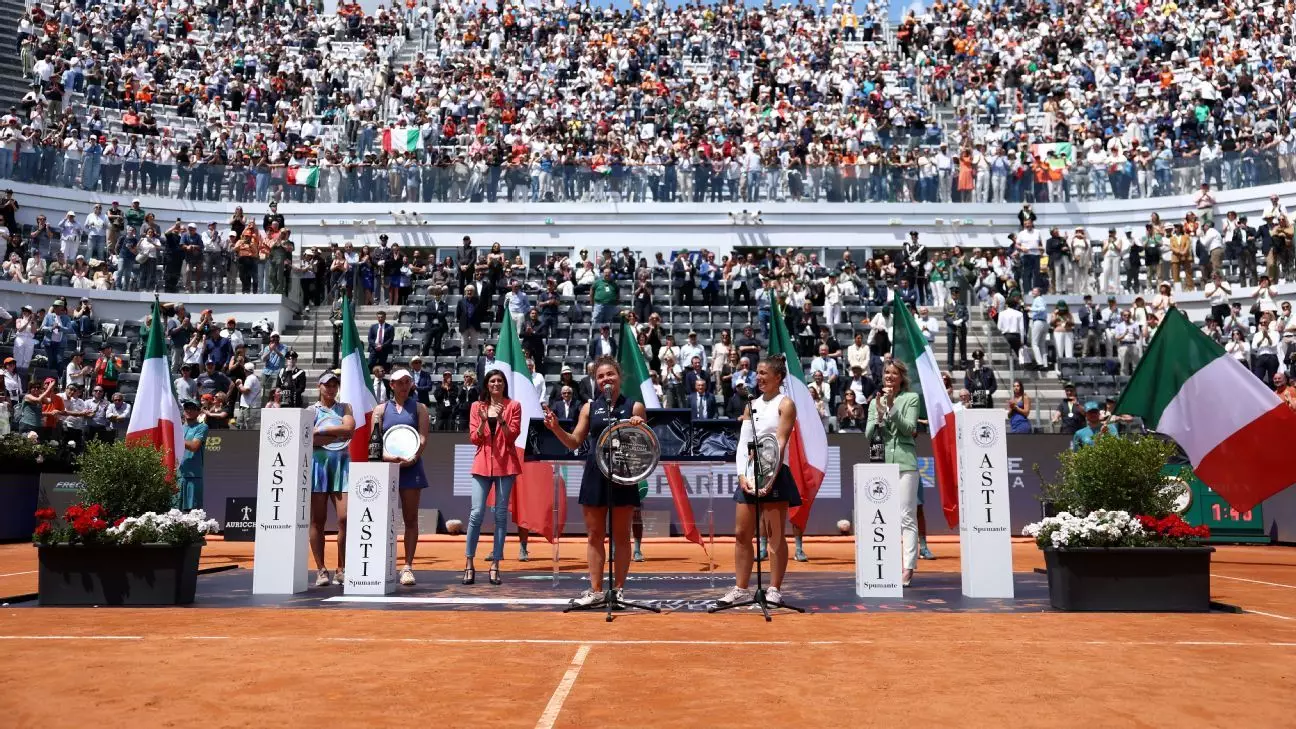In recent years, Italy’s presence in the realm of professional tennis has burgeoned into a veritable renaissance. This surge of success is personified by Jannik Sinner, a powerhouse competitor who currently ranks at the top of the ATP standings. His rise epitomizes the new wave of Italian talent that is sweeping through the sport, and he is not alone. Jasmine Paolini’s recent triumph at the Italian Open demonstrates that women athletes are equally making their mark, breaking a 40-year drought for homegrown champions at this prestigious event. The emergence of players such as Lorenzo Musetti and Federico Cinà suggests a rare depth of talent is blossoming, signalling that Italy may be on the brink of a long-lasting dominance in tennis.
A Visionary Leader’s Ambitious Pursuits
At the forefront of this flourishing scene is Angelo Binaghi, the president of the Italian Tennis and Padel Federation. It is Binaghi’s vision that stirs not just local pride but international aspirations. His audacious aim to elevate the Italian Open to the status of a fifth Grand Slam tournament is a bold challenge to the established hierarchy of tennis events. Binaghi’s questioning of the long-standing dominance of the same four Grand Slams invites scrutiny; why should tennis be confined to a century-old status quo? He argues that the exclusivity limits growth and innovation within the sport, a notion that resonates with many in the tennis community who seek diversification and increased opportunities for players worldwide.
The Italian Open: A New Era
This year’s Italian Open has underscored the significance of Binaghi’s ambitions. With an overhaul that expanded the tournament grounds from 12 to a staggering 20 hectares, the event has grown both in size and prestige. The addition of new competition arenas—including a 3,000-seat court—has enhanced the tournament’s overall allure and capability to host larger crowds. The Italian Open, already revered as a Masters Series event, is evolving to mirror the format and grandeur of Grand Slam tournaments, running the course of two weeks and sharply spotlighting Italy on the global tennis stage.
Infrastructure Advancements: The Future Looks Bright
The plans to install a retractable roof over Campo Centrale, with a lavish budget of €60 million, will further augment the tournament’s status. This significant investment reflects a commitment not just to the present but to the future of Italian tennis, ensuring that weather disruptions no longer dictate play. With the added capacity of 12,500 spectators, the Italian Open is poised to attract more fans, which, in turn, fosters a vibrant atmosphere that players thrive in.
Strategic Moves in a Competitive Landscape
Furthermore, Binaghi’s proactive stance in seeking to acquire the Madrid Open license underlines a strategic mindset that blends ambition with tactical acumen. The idea of eliminating Madrid from the calendar to magnify the Roman event embodies a larger ambition to reshape the tennis landscape. It speaks not just to the Italian community’s aspirations but to a broader quest for equal representation in global tennis venues, making every match matter and offering an illustrious platform for emerging athletes.
The Road Ahead
Italy has showcased their capability by hosting high-profile events such as the ATP Finals in Turin and the forthcoming Davis Cup Final 8 in Bologna. These ventures signify Italy’s rise not only as a tennis powerhouse but also as an effective organizer of major tournaments. Binaghi’s declaration, “We’re now the world champion both on the court and at the organizational level,” is underpinned by these achievements, blending the pride of winning with a responsibility to elevate the sport further.
As Italian players continue to rise in the rankings and captivate audiences globally, the aspirations of Binaghi and the Italian Tennis and Padel Federation to redefine the landscape of tennis are likely to gain momentum. The emergence of Italy as a fertile ground for high-caliber talent is not just a fleeting trend; it represents the dawn of a new era in tennis—one that could challenge the status quo and usher in a fresh chapter in the storied history of the sport.


Leave a Reply